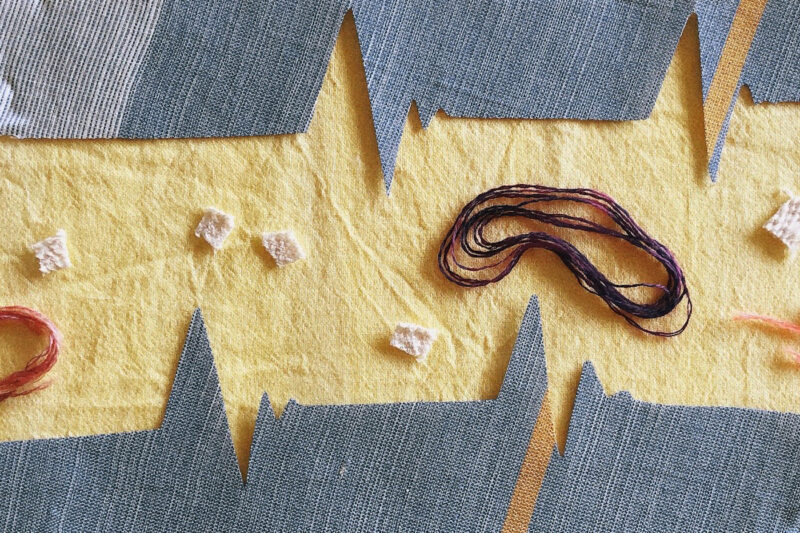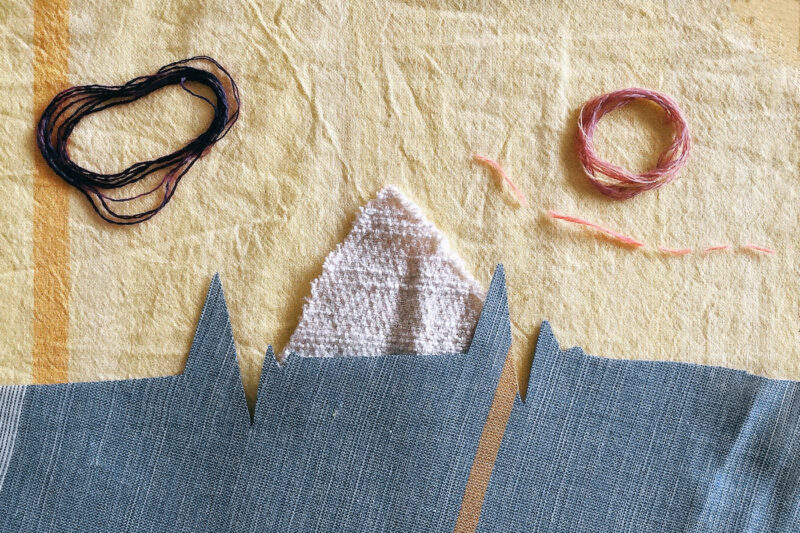#29 減塩の真実を知ろう!
#29 Know the truth about low-salt!

2023 . 07 . 01
塩分摂取を減らしましょう!
というキャッチコピーで、日本中、多くの地域で
積極的に進められてきた「減塩」政策。
塩を減らすことが、高血圧や動脈硬化や
心筋梗塞の予防になるからと
今や減塩の勧めは
中学生にも指導されているところもあるんです。
塩を減らす、ということで、
短絡的にしょっぱいものを減らす必要があるとして
お味噌汁を避けるようになった代わりに、
甘味のあるコーンのインスタントカップスープを
飲んでいる子どもたちも多くいます。
ところで、塩って、減らしていいんだろうか。
汗も涙も鼻水も舐めるとしょっぱいという事実が、
私たちの体の体液が、
塩水でできていることを教えてくれています。
私たちの体の水は生理的食塩水と言われる
0.85%の塩分濃度で作られています。
大切なことは私たちの体は、発電しているということ。
心電図も、脳波も、筋電図も、
私たちの体に電気が流れていることを示す検査法です。
電気が流れていることが確認できることで
その人の生存確認ができるのです。
電気が流れている=生きている。
電気が流れるためには「塩」が必要なんです。
塩水に電極を入れると電球の電気がつくことを
友達と確認した楽しい実験、
小学校か中学校の理科の時間にやった記憶がありますね!
そして、砂糖水に電極を入れても
電球に電気がつかないという実験もやりました。
砂糖は絶縁体なので電気を通さないんです。
私たちが生き生きと発電して、
電流を起こして、心臓を動かして、脳を動かして
生きていくために、塩はとても大切です。
「減塩」という言葉は、
生きるために必要なものを避けさせる、怖がらせる
敵視するという行動を誘導してしまう可能性が
あるんじゃないかと思ってしまいます。
私たちの命に必要な塩は、どういう塩かというと、
マグネシウムやカルシウムや鉄や亜鉛や、
その多様性豊かなミネラルと共にある
ナトリウムなんですよね。
これは言い換えれば、未精製の塩。
私たちの体の中で、
ミネラルは多様性豊かにチームで働いています。
マグネシウムと一緒にナトリウムが存在することで、
血圧は上がりにくいし、
マグネシウムとカルシウムが一緒に存在することで、
カルシウムの吸収が高まるし、
お互いのパワーをバランスよくコントロールし合う
仕組みになっているんです。
だから、「塩」を単純に減らすことが、
健康につながる、とは言えないわけです。
本当に減らす必要があるナトリウムはこちら。
・亜硝酸ナトリウム 硝酸ナトリウム
・・・・・発色剤(ハム、ソーセージなど)
・亜硫酸ナトリウム 次亜硫酸ナトリウム
・・・・・漂白剤(食品を白くする)
・グルタミン酸ナトリウム
・・・・・調味料(食品に旨味を与える)
・乳酸ナトリウム
・・・・・ph調整剤(食品のphを調整する)
・炭酸水素ナトリウム
・・・・・膨張剤(食品をふんわりさせる)
・安息香酸ナトリウム
・・・・・防腐剤
・リン酸ナトリウム 重合リン酸ナトリウム
・・・・・乳化剤
これらはマグネシウムも、カルシウムも一緒にない、
ナトリウムが単体で取り出されて使われている添加物です。
このナトリウムを摂りすぎた時に、
血圧を上げて、血管に負担をかけて、
心臓に負担をかけていくリスクが高いのです。
減塩すべきは、添加物のナトリウムなんだよ。
だから、しっかり作られたお味噌汁や梅干しや、
お醤油や、お漬物は、命につながる食べ物だから
嫌いにならないでね。と、子どもたちに伝えていきましょう!
日本各地に、丁寧に作られている自然塩、
未精製の塩がたくさんあります。
旅行先で探してみると、きっと楽しいですね!
買い物は投票。
この素晴らしい塩づくりを絶やさないように、
一緒に応援していきましょう!
書き人いのうえまゆみ
Let’s reduce salt intake! is the catchphrase that has been actively promoted in many regions throughout Japan to “reduce salt intake.
In some places, the recommendation to reduce salt is now being taught even to junior high school students because reducing salt can help prevent high blood pressure, arteriosclerosis, and myocardial infarction.
Reduce salt, as a shortcut to the need to reduce the amount of salty foods.
Instead of avoiding miso soup, many children are drinking sweet corn instant cup soup.
By the way, do you think should salt be reduced?
The fact that sweat, tears and snot are salty when licked tells us that our body fluids are made of salt water.
The water in our bodies is made up of physiological saline solution, or 0.85% salt concentration.
The important thing to remember is that our bodies are generating electricity.
Electrocardiogram, electroencephalogram and electromyography are all testing methods that show that electricity is flowing through our bodies.
Being able to confirm that electricity is flowing is the only way to verify the person’s survival.
Electricity flowing = alive.
“Salt” is necessary for electricity to flow.
I remember doing this fun experiment with a friend to confirm that putting an electrode in salt water would light up a light bulb, and I doing it during science class in elementary or junior high school!
And we also did an experiment where we put an electrode in sugar water, but the light bulb did not conduct electricity.
Sugar is an insulator, so it does not conduct electricity.
We need salt to keep us alive, to generate electricity, to generate current, to get our hearts going, to get our brains going.
Salt is very important for our life.
I wonder if the term “less salt” might induce the behavior of avoiding something that is necessary for our life, of being afraid of it, of being hostile to it.
The kind of salt we need for our lives is sodium along with magnesium, calcium, iron, zinc and its rich diversity of minerals.
This is, in other words, unrefined salt.
In our bodies, minerals work as a team in rich diversity.
The presence of sodium together with magnesium prevents blood pressure from rising, and the presence of magnesium and calcium together increases calcium absorption.
So we cannot say that simply reducing “salt” leads to good health.
Here is the sodium that really needs to be reduced.
・Sodium nitrite Sodium nitrate
・・・・・Coloring agent (ham, sausage, etc.)
・Sodium sulfite Sodium hyposulfite
・・・・・Bleaching agent (food whitening)
・monosodium glutamate
・・・・・Seasoning (gives flavor to food)
・Sodium lactate
・・・・・ph-adjuster (adjusts the ph of food)
・Sodium hydrogen carbonate
・・・・・Bulking agent (fluffs up food)
・Sodium benzoate
・・・・・preservatives
・Sodium phosphate Sodium polymerized phosphate
・・・・・Emulsifier
These are additives in which sodium is taken out and used by itself, without magnesium or calcium together.
When too much of this sodium is consumed, there is a high risk of raising blood pressure, straining blood vessels, and straining the heart.
It’s the added sodium that should be reduced.
So, let’s tell our children don’t hate well-made miso soup, pickled plums, soy sauce, and pickles because they are food that leads to lives!
There are many carefully crafted natural, unrefined salts available throughout Japan.
I am sure it will be fun to looking for it on your trip!
Shopping is voting.
Let’s support such a wonderful salt production together so that it will not cease!
Author ; Mayumi Inoue


